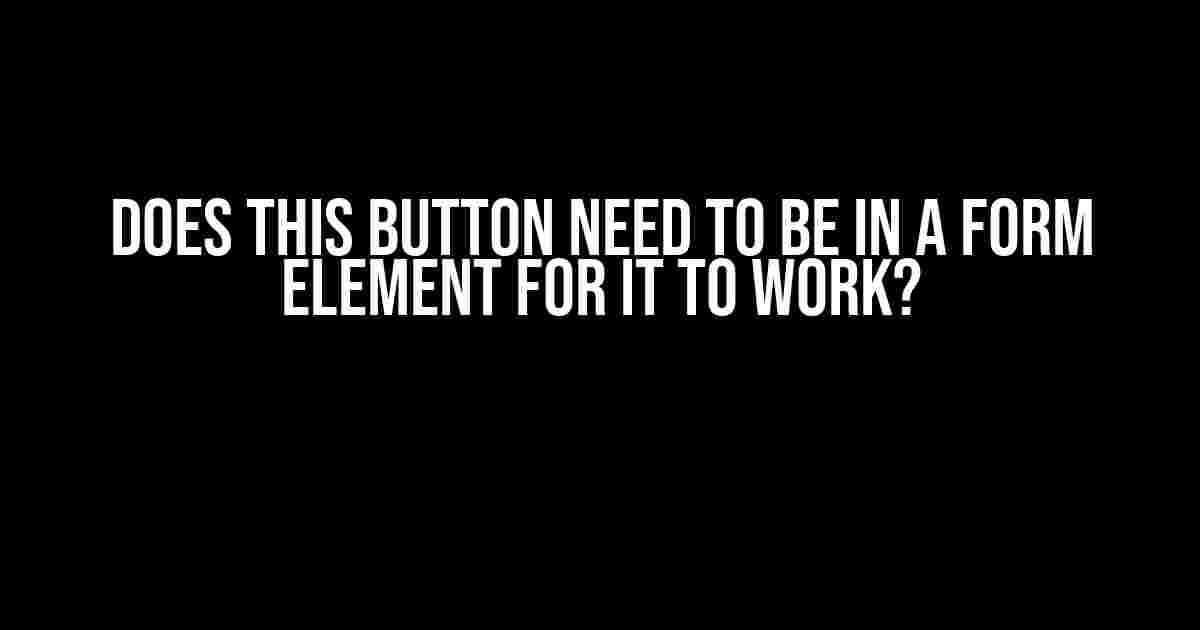As a web developer, you’ve probably encountered this question at some point in your career: does a button need to be wrapped in a form element for it to function properly? The short answer is, it depends. But don’t worry, we’re about to dive into the long answer, covering all the scenarios and exceptions.
Table of Contents
What is a Form Element?
A form element, represented by the `
